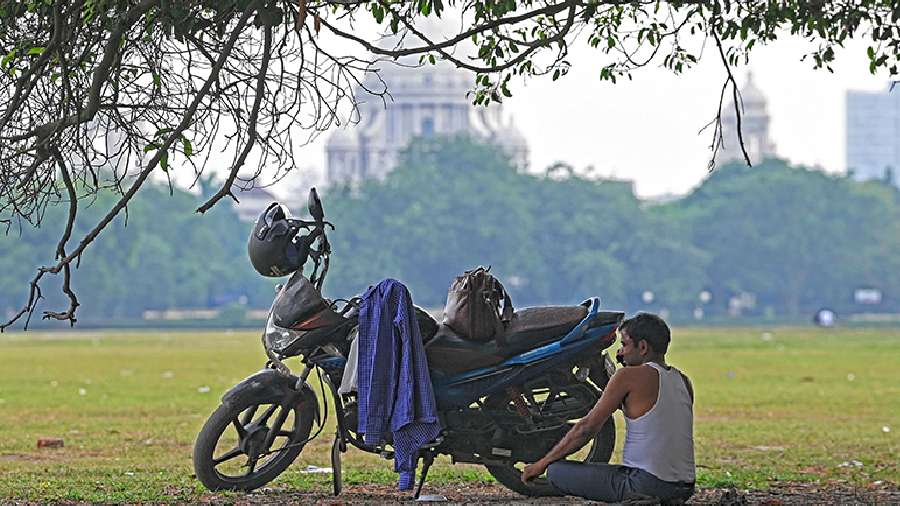More than half of the squall season has passed but Kolkata has so far barely got a couple.
The season’s first Nor’wester is yet to hit the city.
The city’s usual quota is “a couple of squalls in March and around a dozen in April and May”, according to the Met office.
A spell of thundershower on March 30 ended a long dry spell in Kolkata, one that began at the end of October.
The next time the city got uniform rain and gusts of wind was on Monday, April 24.
The Telegraph tries to find out about the missing squalls.
What?
A squall is a storm that usually brings rain.
A Nor’wester is a squall that originates over the heated Chhotanagpur plateau in the late afternoon and sweeps through parts of eastern India over the next three to five hours at a wind speed of over 45kmph. It is usually followed by a brief spell of rain.
How?
A low-pressure area over central India and a high-pressure area over the Bay of Bengal are the two important factors needed for a squall.
The moisture-laden winds, which then flow from the sea to the land, lead to the formation of thunderclouds that trigger a storm that moves towards south Bengal via Jharkhand.
What was missing?
For a long period, there was no weather system over Jharkhand or adjoining parts, said a Met official.
“But even when there was a system, there was no high-pressure over the Bay,” said G.K. Das, director, IMD, Kolkata.
He also pointed to the heat wave conditions being limited to Bengal and some adjoining areas. “When Bengal was reeling at 40 degrees Celsius, there was no heat wave in Delhi. The heat was localised,” he said.
Another reason for the missing squalls was the dominance of dry northwesterly winds in the upper reaches of the atmosphere.
“Whatever southerly winds were there, were in the lower level,” said a Met official.
“The dry westerly winds went well into the Bay, pushing back the moisture-laden winds further back. The high-pressure conditions were there, but nowhere near the coast. A high-pressure belt on mid-sea can have very little impact on Kolkata,” said a Met official.
What’s next?
A cyclonic circulation that triggered rain in Kolkata on Monday has moved westwards to the Vidarbha region in eastern Maharashtra.
“It has not moved much since. For thunderstorms in Kolkata, the system has to move eastwards. That movement is not ruled out on Thursday,” said Das of IMD, Kolkata.
But if it does not rain by Thursday, the next few days are likely to remain dry, he said.
“However, the climatological situation has changed. The moisture content in the air has risen. With sufficient heating and moisture, local thunderstorms are likely. The weather systems are also starting to take shape. Even if one dissipates, another should follow,” he said.
